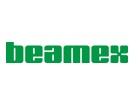
What is operational excellence and how can calibration help achieve it?

Calibration is a documented comparison of the device to be calibrated against an accurate traceable reference device (often referred to as a calibrator). In process industries, calibration plays an important role in operational excellence. A good calibration process ensures processes work as designed and plays an important role in ensuring the quality of the end product. The efficiency of the calibration process is an important element of overall operational efficiency and greatly depends on the type of calibration process.
Reasons for calibrating
Aside from enabling operational excellence, there are various reasons to perform calibration. All measurement instruments drift over time, meaning their accuracy deteriorates and regular calibrations are required. In the process industry, this fact is directly linked to the quality of the end product. In many industries, such as the pharmaceutical industry, regulatory requirements set tight rules for the calibration of critical process instruments. Likewise, quality systems set requirements for calibration.
As with many other things, money is also an important reason. In many cases money transfer depends on measurements, so the accuracy of the measurements directly effects how much money is transferred. In some processes, the safety of both the factory and its employees, as well as that of customers or patients who use the end product, can be the main driver for calibration.
Calibration interval
To maintain the traceability of all your process measurements, a valid unbroken traceability chain needs to be maintained. This means regular recalibrations at all levels of the traceability chain – not only all the process measurement instruments, but also the working standards and reference standards (or calibrators).
Finding the proper calibration interval is important. If you calibrate too often, you end up wasting resources. But if you calibrate too infrequently, you face the risk that instruments will drift outside of set tolerances – and in many cases that can have serious consequences.
This means companies are constantly balancing risk against wasted resources. A proper analysis of calibration history and calibration interval is key, and finding the right sweet spot helps to contribute to operational efficiency.
Digitalising, streamlining and automating the calibration process – finding a better way
When we realise calibration’s role in operational excellence, we understand the importance of making calibration processes more efficient – how can we produce less waste and do more with less?
At many industry sites, there are thousands of calibrations carried out annually. To streamline those processes and save time with every calibration can save a huge amount of money and have a big impact on the bottom line.
One of the main opportunities for time saving is to ditch manual calibration processes – typing or using pen and paper to document things – and instead move to a modern digitalised world where the calibrator automatically stores the calibration results in its memory, from where they can be digitally uploaded to calibration management software. Not only does this digitalised and paperless calibration process save a lot of time, it also eliminates all the errors related to manual data entry. Digitalisation also dramatically improves the quality of calibration data. And given that analysis and decisions are based on data, it’s clear that data should be of high quality.
The streamlining of calibration processes with the help of digitalisation is one major contributor to their operational excellence. As with any processes, when working to improve operational excellence there is a constant quest to find better ways of doing things. If the calibration processes are very outdated, relying on manual documentation and lacking automation, then it’s possible to make a major leap in excellence by moving to digitalised and automated processes. After that is done, the next step is to constantly find small improvements.
Make sure you leverage automation in calibration whenever possible, that is a great way to improve efficiency. Consistent automated processes will also improve the quality of data by eliminating the risks for human errors. It will also make it quicker and easier for new employees to get up to speed with higher quality of work.
Calibration can help unlock operational excellence by moving to a modern digitalised process that reduces the time needed for calibrations and improves data quality.
Read the full article: https://blog.beamex.com/what-is-operational-excellence-and-how-can-calibration-help-achieve-it
External URL: https://blog.beamex.com/what-is-operational-excellence-and-how-can-calibration-help-achieve-it
By Beamex
349 Views
Recent Posts
- Heliex Power Saves Formaldehyde Producers £500k
- NEPIC spoke with member, Alpek Polyester UK Ltd to learn how they develop their workforce for the future and discover more about their mission to educate on PET
- FEG Global Designs Self-Powering Facility In Ghana
- Thorne & Derrick Electrifying Industry With 3M
- UK MP and chemical engineer Chris McDonald keen to unite the worlds of engineering and politics
Back to News >



